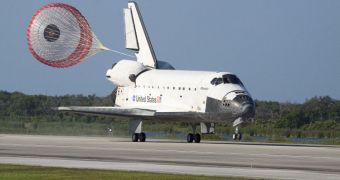Even though there is currently a lot of talk about postponing the last planned shuttle flight, and even adding an extra mission to the flight manifest, one things remains certain – the orbiters will be retired. Even if they continue to fly in 2011, they will still need to be placed in museums after all dangerous substances are removed from them. But the American space agency has just canceled making its announcements of where the three working orbiters will rest, instead opting to wait for a little while longer, Space reports.
One of the main reasons for the delay is the rescheduling of missions in the approved flight manifest. “They haven't established a new date. Because of delays to the manifest, shifting STS-133 to November and STS-134 to February, the announcement was also delayed,” says Mike Curie, a spokesman for NASA. He adds that, even though journalists and museum representatives have been waiting for news on where the shuttles will be distributed since January, a decision has yet to be made. Officials at NASA are understandably eager to learn where the new course of events leads.
At the beginning of the year, the situation was pretty clear-cut. The shuttles were to have their last flights by September, and were to be decommissioned – and ready to be shipped to their respective museums – by early 2011. But recent developments, including congressional bills to add a new flight to the International Space Station (ISS) and the proposal that Endeavor fly its last mission in February of next year, have stirred up the water, so nothing is clear at this point. Only after this situation is resolved will NASA officials decide on where to exhibit the orbiter for the general public to see.
As far as the decision process itself goes, a lot of dispute already exists. In a July 15 bill, the US House Committee on Science and Technology proposed that priority be given to states that share a historical connection to the Space Shuttle Program. However, this type of wording has attracted a lot of criticism from aviation groups and museums elsewhere in the United States, which also want an equal chance of housing an orbiter.
“With the help of the entire delegation it was possible to have the amendment pass and ensure that a decision will be made that reflects the entire contributions of the nation to the shuttle program and not just those of two states. We recognize this remains a very competitive process and that's how it should be until a final decision is made by NASA,” says the chair of the National Aviation Heritage Alliance, John Boschin, one of the critics to the original wording.

 14 DAY TRIAL //
14 DAY TRIAL //